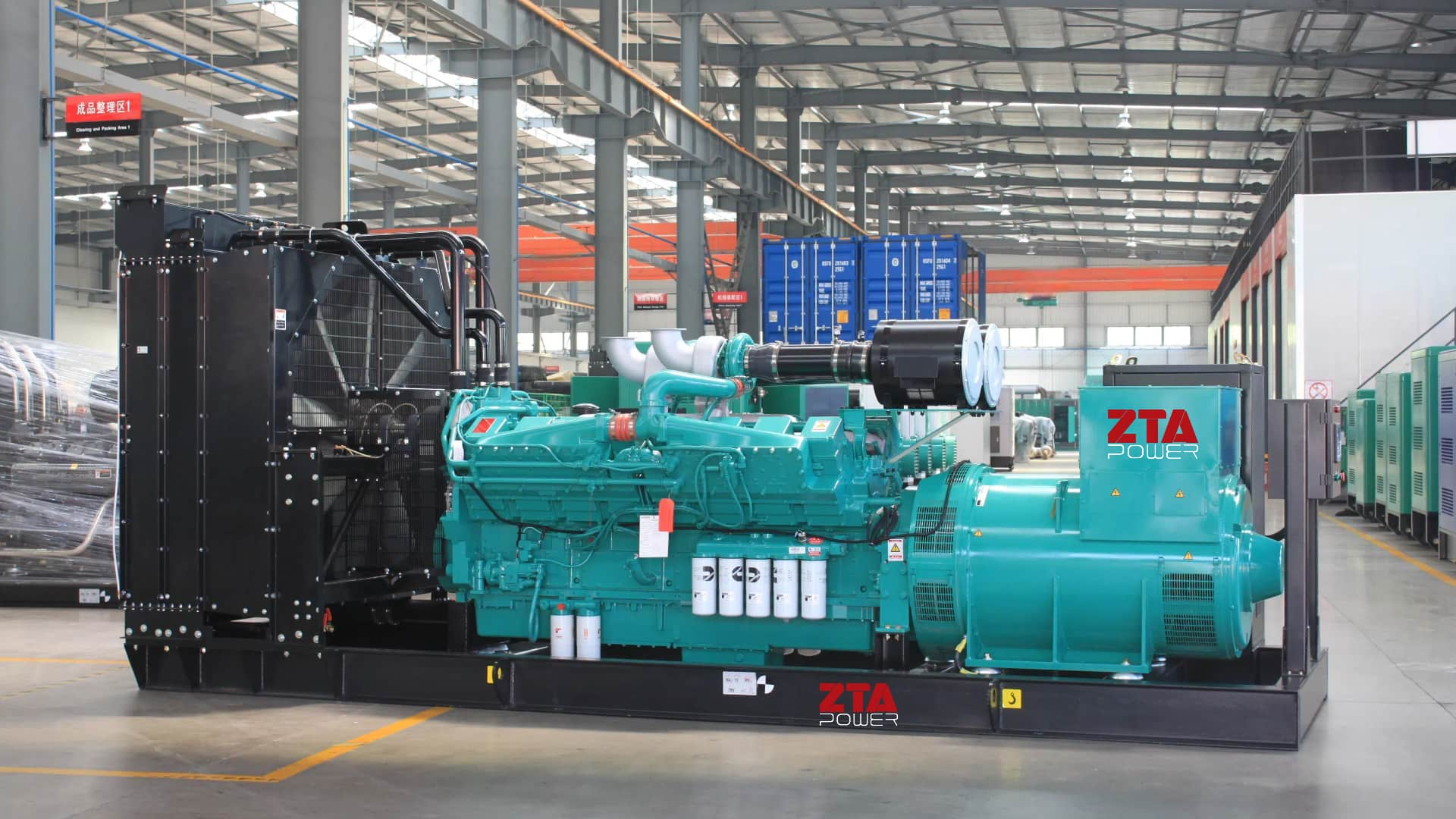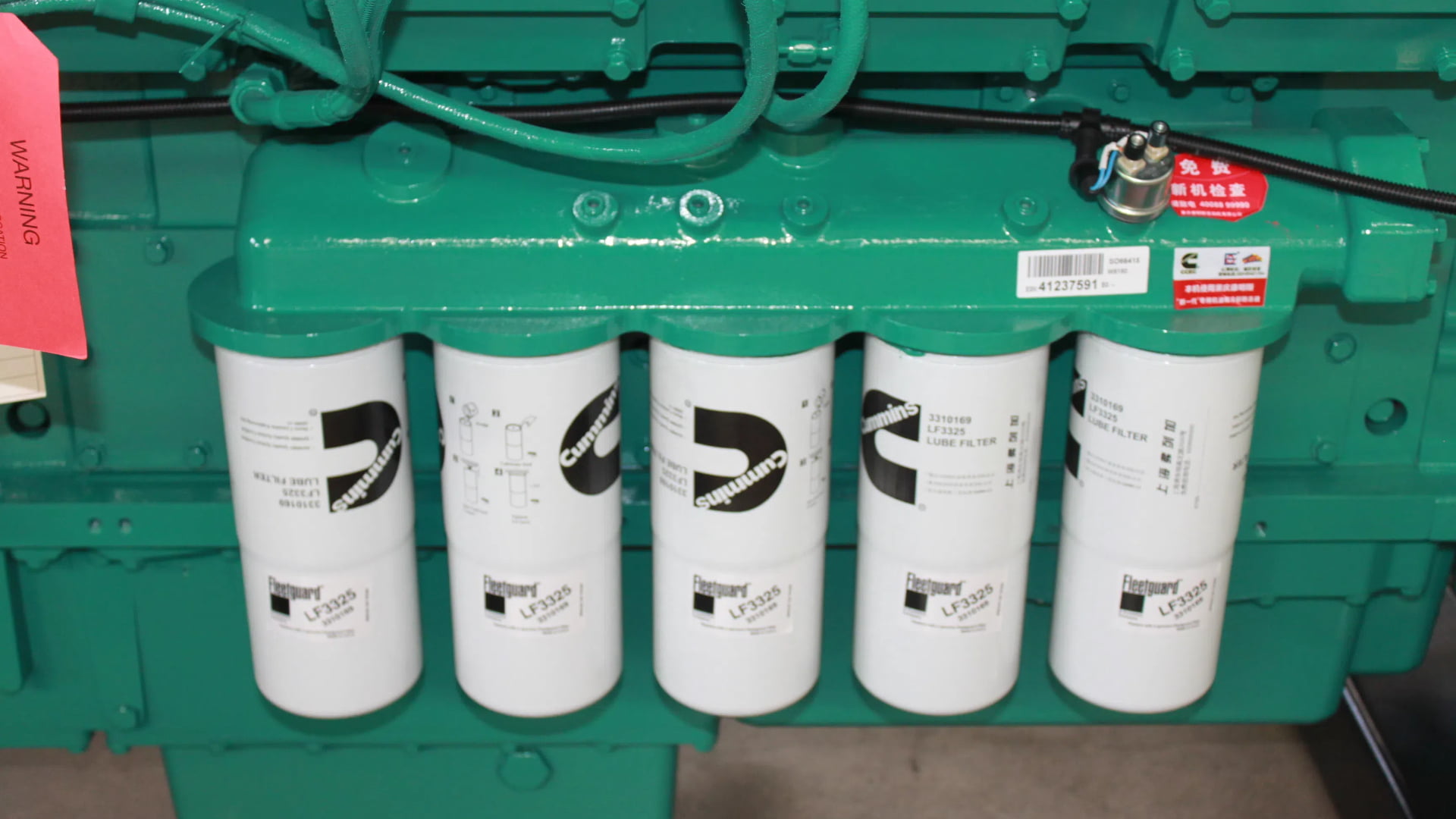Diesel Generator Systems for Data Centers
Data centers, serving as critical infrastructure for enterprises, media platforms, and websites, provide large-scale, high-quality, and secure services. Continuous power supply is a core principle, ensuring stable operation of both infrastructure and IT equipment. In extreme scenarios of complete grid failure, data centers must deploy robust solutions. Diesel generator sets, as vital emergency equipment, take over power supply during outages to prevent catastrophic losses from server downtime or data loss. Below, we explore the composition and working principles of diesel generators commonly used in data centers.
『 Generator Set Specs 』
| Prime Power | 1200kw/1500kva |
| Standby Power | 1320kw/1650kva |
| Cummins Engine Model | KTA50-GS8 |
| Leroy somer Alternator Model | LSA50.2L8 |
| Fuel Consumption | 309L/h |
『 Cummins Diesel Engine Specs 』
| Displacement | 50.3L |
| Bore×Stroke(mm) | 159×159 |
| Cylinder | 16 |
| Aspiration |
Turbocharged and Low Temperature Aftercooled |
|
Coolant Capacity— Engine Only |
165L |
|
Engine Idle Speed(RPM) |
725 - 775 |



Composition and Working Principles
A diesel generator set is an energy conversion device that transforms chemical energy into electrical energy, delivering stable power to data centers. It integrates mechanical dynamics, electrical engineering, and automated control, comprising three core components:
Diesel Engine: Converts fuel into mechanical energy.
AC Generator: Converts mechanical energy into electrical energy.
Control System: Manages startup, operation, and shutdown processes.
The system’s reliability hinges on the high quality and performance of each component. Critical specifications, such as those listed on the generator’s nameplate, are key indicators of its capabilities.
Roles and Applications in Data Centers
Diesel generators play a pivotal role in data centers:
Backup Power: Ensure uninterrupted power during grid failures.
Primary/Continuous Power: Serve as self-sufficient or long-term power sources for specialized facilities.
Mobile Power Solutions: Portable units are ideal for emergencies in telecommunications, oil fields, geological exploration, and disaster recovery.
Generators are categorized by application:
Standby Units: Activated during grid outages.
Prime Power Units: Designed for prolonged operation.
Emergency Units: Deployed for critical, short-term needs.
Automated and Remote-Controlled Systems
Automatic Generator Sets:
Function as standby units with intelligent automation (auto-start, auto-run, auto-shutdown).
Equipped with an ATS (Automatic Transfer Switch) for seamless transition between grid and generator power.
Minimize operator intervention and reduce power interruption time.
Remote-Controlled Generator Sets:
Known as "Smart Interface" or three-remote (remote control, remote signaling, remote measurement) systems.
Utilize advanced microprocessor control for full automation.
Enable real-time monitoring via RS232/RS485 communication interfaces, allowing centralized stations to remotely manage distributed units.